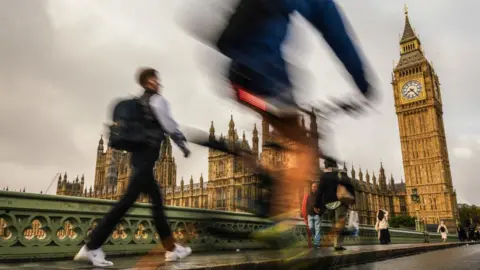The recent statistics released by the Office for National Statistics (ONS) indicate that government borrowing in the UK surged higher than anticipated during June. This rise in borrowing can be attributed primarily to a notable increase in debt interest payments, which have cast a shadow over the state of public finances. Specifically, the government’s borrowing for June reached £20.7 billion, a staggering increase of £6.6 billion compared to the same month in the previous year.
The ONS revealed that this heightened borrowing level represents the second-highest figure for June since records began in 1993, surpassed only by the figures from June 2020, which were heavily influenced by the economic downturn caused by the COVID-19 pandemic. The figures highlight a worrying trend, where public expenditure is outpacing income from taxes, including an increase in National Insurance which had been implemented in April. The relationship between public spending and tax revenue is crucial, and the current scenario indicates a widening gap that raises pressing questions regarding the sustainability of government finances.
In light of these developments, speculation is rife about potential tax increases that could be introduced in the upcoming Budget. The government may find itself in a challenging position after it had previously attempted to implement cuts to welfare benefits, which were intended to save substantial amounts of public money. However, given the recent borrowing figures, a reversal of those cuts may be necessary, further complicating the fiscal picture.
The rising interest payments on government debt, which ballooned to £16.4 billion in June 2025—nearly doubling the figure from the same period the previous year—are a significant contributor to the overall increase in borrowing. These payments have emerged as a major drain on the treasury, intensifying the discussions around fiscal responsibility. Dennis Tatarkov, a senior economist at KPMG UK, has underscored that this financial data adds even more pressure to the public finances. He noted that the long-term outlook appears fraught, with persistent economic headwinds posing a risk to meeting fiscal targets, thereby potentially requiring the government to implement further tax hikes or expenditure cuts in the Autumn Budget.
Moreover, an alarming trend has been observed over the course of the current financial year, with borrowing in the first three months reaching £57.8 billion—an increase of £7.5 billion compared to the same period in 2024. This consistent rise indicates that the government is grappling with significant fiscal challenges, and it may necessitate a reevaluation of its financial strategies moving forward.
In a bid to assure the public of its commitment to sound fiscal management, Darren Jones, the Chief Secretary to the Treasury, emphasized the government’s dedication to adhering to stringent fiscal rules. He asserted that the objective is to avoid borrowing for everyday operational expenditures while also focusing on reducing debt as a proportion of the economy. This statement reflects an ongoing commitment to restore balance and control over the nation’s finances amidst mounting challenges.
The current economic landscape underscores the complexities faced by the UK government as it navigates rising costs, increased borrowing needs, and public expectations. As these elements converge, observers will undoubtedly watch closely to see how the government proposes to address these compounding financial pressures in its upcoming financial planning. The implications of these borrowing figures extend beyond immediate fiscal policies; they present a wider dialogue about the long-term viability of public finances in the context of economic stability and growth.










